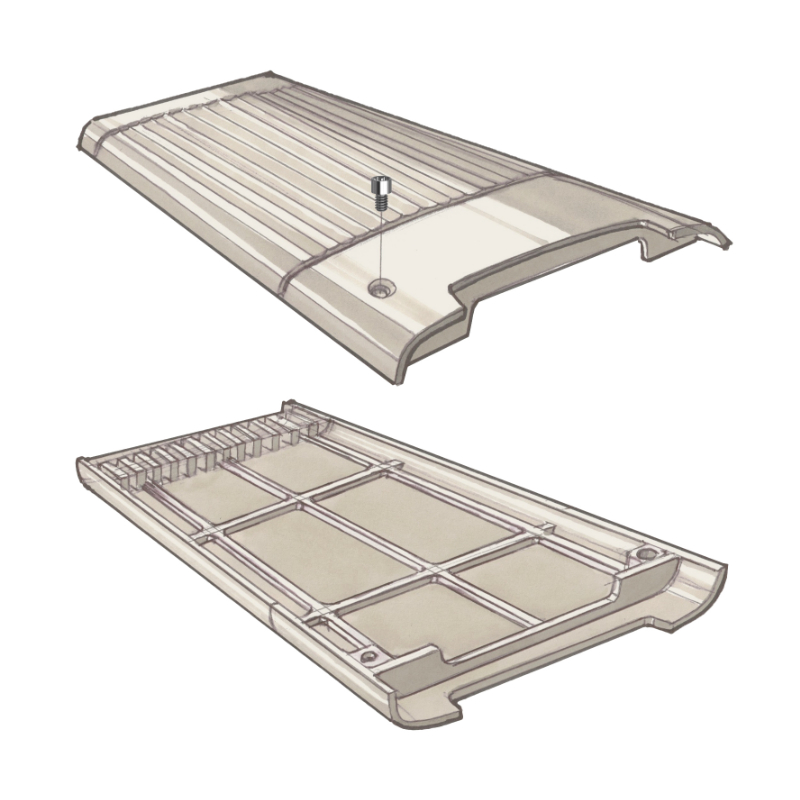Circular WLAN routers with sustainable aluminum bodies
WLAN routers made from aluminum, equipped with a versatile multifunctional surface, and made according to the newest EU ecodesign standards: That is the objective of a German-Polish consortium of research and industry partners. With much less plastic used in the design and its circuit boards substantially brought down in size, the proposed routers offer far greater resource efficiency and circularity.

WLAN routers are a ubiquitous and inevitable part of today’s connected world. As radar technology and case designs continue to evolve, new opportunities are opening up to improve performance, add more features, and make the systems better for the environment. The right choice of materials is not only a way to save costs. it can become a motor for more sustainable product designs en route to a circular economy. Aluminum is already a common sight in the IT and communication (ICT) sector, used in anything from smartphones to laptops or mobile communications transceivers. The material can be recycled so effectively that its carbon footprint is less than that of comparable plastic products after only two product cycles.
Working with the Polish research Institutes Lukasiewicz ITR and INM and the sister Fraunhofer Institute IEM, the researchers at Fraunhofer IZM are testing aluminum’s potential for use in common WLAN routers. This needs an established technology for creating 3D-molded interconnect devices to be able to integrate antennas directly into curved aluminum surfaces. At the same time, the researchers are working on an eco-design concept that will help bring down the amount of material needed and make the finished product even better for recycling. This combined technology and eco-design approach is expected to demonstrate how the ICT devices of the future could be designed with a truly circular economy in mind.
Direct laser structuring for a multifunctional surface
Beyond the choice of aluminum for its case, the router also stands out for its multifunctional surface. Antennas and sensors are integrated right into the outer shell, which allows a compact, but efficient design of the finished product, while also allowing its inside to help conduct heat during operations. In order to achieve this feat, the surface is treated with a specially adapted version of the 3D MID technology. This technology treats the coating with laser direct structuring, but has only ever been used on plastic surfaces. The coating itself works very well with radio frequency applications and can accommodate RF structures or antennas working at 6 GHz. Intriguingly, the top and bottom of the case have an identical design, which means that far fewer specialized tools are needed during production, making manufacturing cheaper and faster. The two halves clip together without glues or screws, ensuring a lasting fit, but also giving easy access for maintenance or repairs. On the inside, there are fittings for aluminum substrate carriers in place to ensure the optimum placement of the electronic components.
The AiF-funded Cornet project „ALU4CED“ (Aluminum based multifunctional housing for circular electronic devices) is scheduled to run from 1 October 2023 to 30 September 2025, with the Federal Ministry for Economic Affairs and Climate Action supporting the work done at Fraunhofer IZM. The project partners include the Fraunhofer Institute for Mechatronics System Design IEM, the Lukasiewicz Institute of Non-Ferrous Metals INM and the Lukasiewicz Tele and Radio Research Institute ITR, all working in partnership with industry representatives. The project was set up in response to the proposed introduction of the EU’s Ecodesign for Sustainable Product Regulation (ESPR), which will raise the bar for the eco-design of products. The proposed Ecodesign for Sustainable Products Regulation introduced in March 2023 is replacing the current ecodesign regulations (2009/125/EG) to pave the way for ecologically sustainable, durable, and truly circular products. The ESPR will cover even more product categories and criteria and place new emphasis on matters of energy. Alongside energy efficiency considerations, the proposal suggests new standards for resource efficiency, for sustainable manufacturing, for the move towards repairable and circular products, for the handling of problematic materials, and for end-of-life disposal. The ESPR is planned to come into force in the next few months.
From Silicon to Sustainability - Electronic Goes Green (EGG+)
The project will feature prominently at the „Electronics Goes Green (EGG+)“ conference, hosted by Fraunhofer IZM in Berlin in June 2024. The event is all about „From silicon to sustainability“ and gives attendees a great insight into how lifecycle assessments are made for electronic components, how current and coming technologies will affect our environment, and which strategies can help realize a genuine „circular economy“. Register now at electronicsgoesgreen.org and get connected with the thought leaders and practitioners working on these inspiring issues at the conference or on the dedicated tours of companies in and around Berlin.
(Text: Niklas Goll)
Ecodesign for Sustainable Product Regulation: https://commission.europa.eu/energy-climate-change-environment/standards-tools-and-labels/products-labelling-rules-and-requirements/sustainable-products/ecodesign-sustainable-products-regulation_en
Last modified:
 Fraunhofer Institute for Reliability and Microintegration IZM
Fraunhofer Institute for Reliability and Microintegration IZM